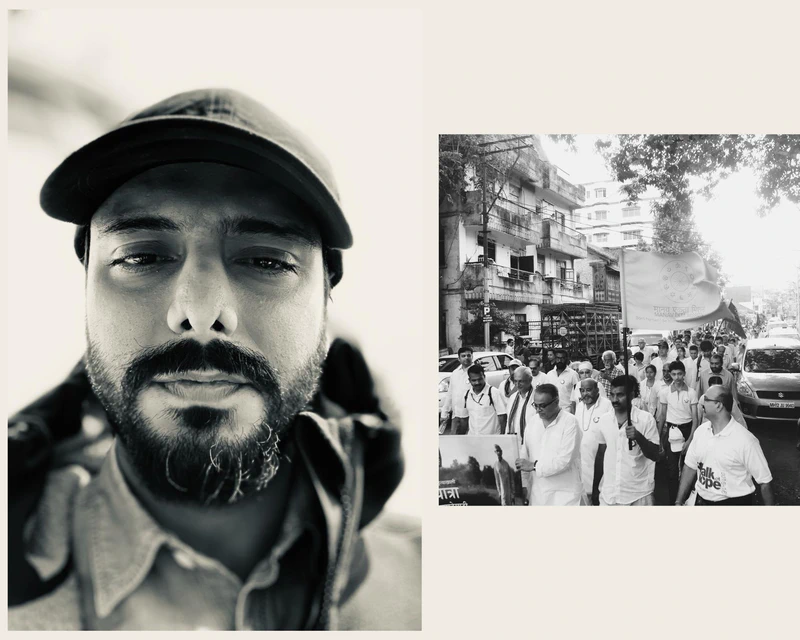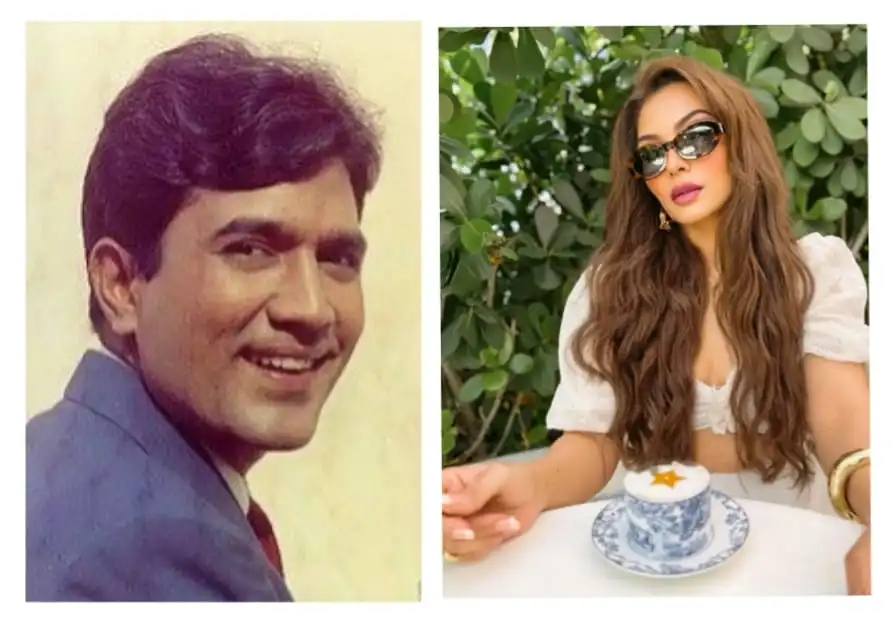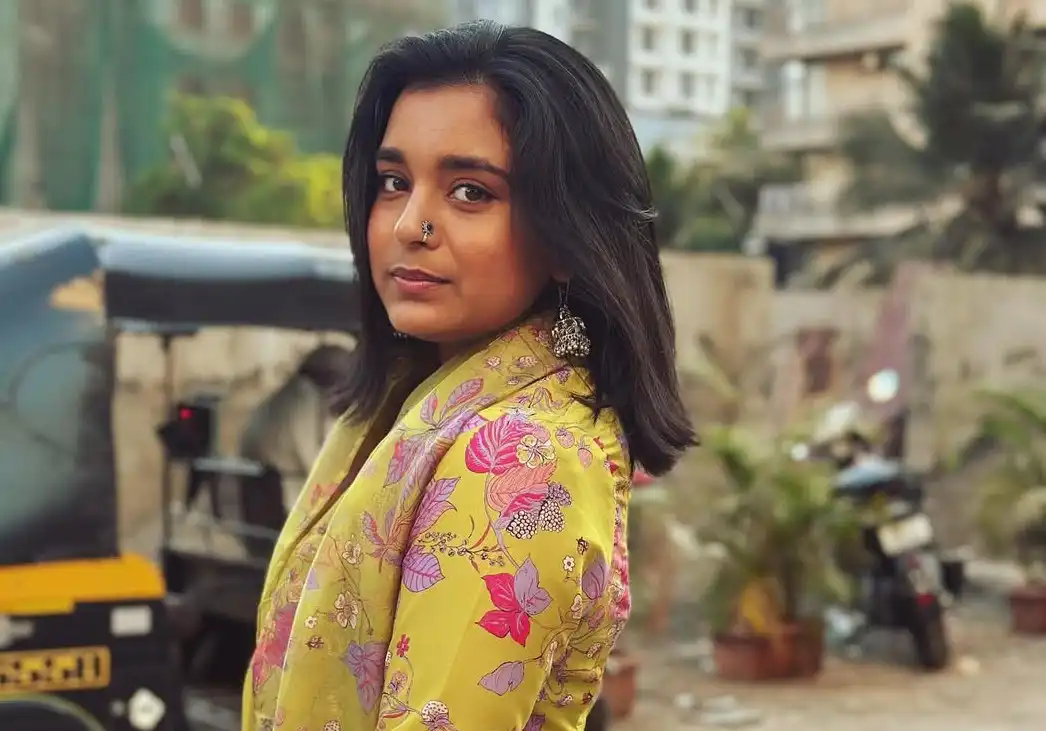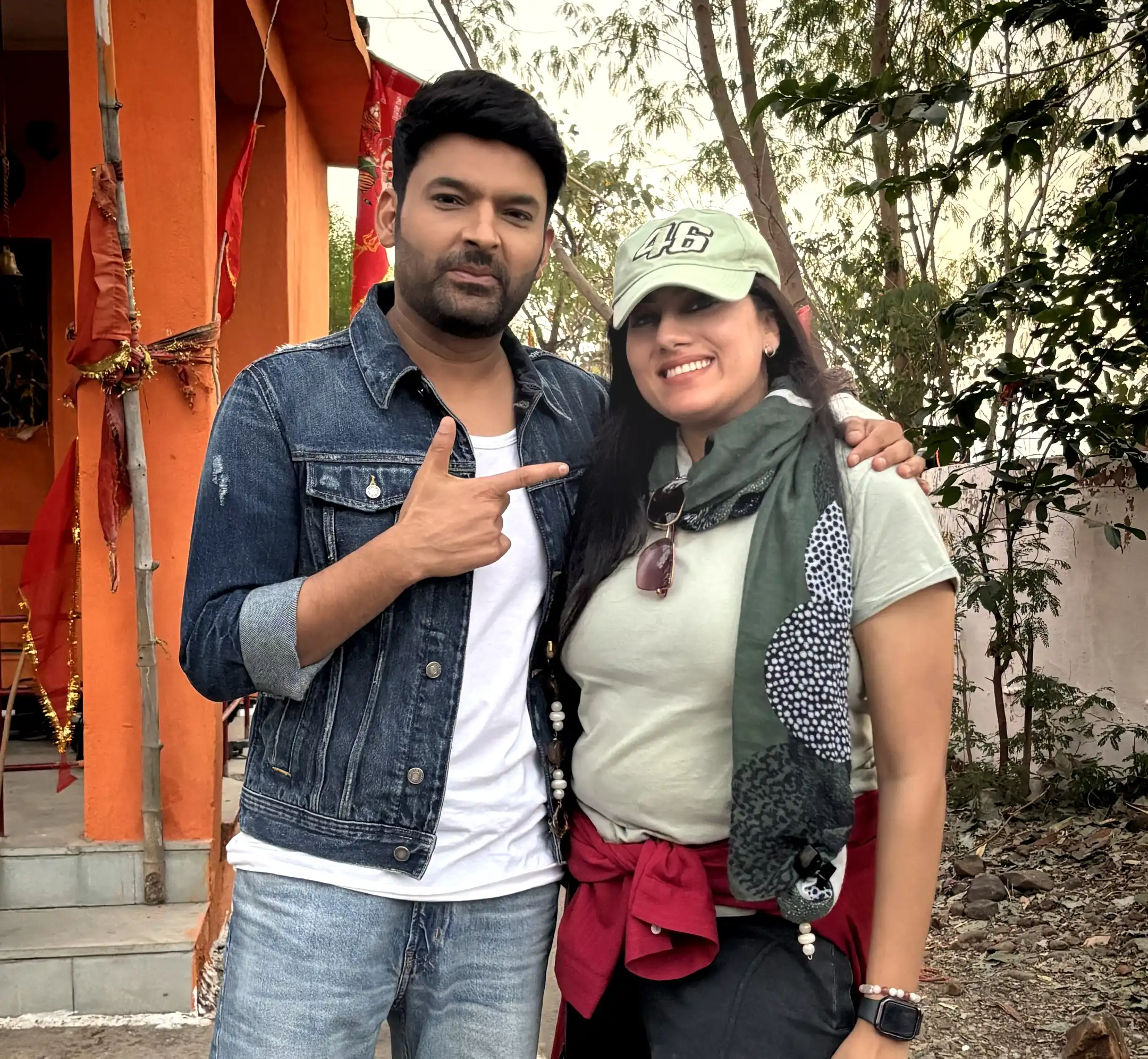What inspired the creation of the documentary Walking With M, and how did the idea come about?
It was always clear to me that I wanted to make a feature length documentary and that was always a key driving force. I have had a stint with Non-Fiction as well, however, but docu-features always inspired me. The idea of the truth on screen, being expressed through storytelling has always been something I’ve been drawn towards.
In 2013, a pivotal moment occurred when I crossed paths with Sri M and learned of his extraordinary mission to travel the length and breadth of our country, on foot, advocating for Human Unity through the Manav Ekta Mission. The sheer magnitude of his undertaking, walking 25-30km daily, struck a chord within me. It became apparent that such a movement, with its social potential deserved to be immortalized on film, regardless of the impact.
During those days, he was travelling across Maharashtra, meeting leaders like Anna Hazare and informing them about this padyatra called the Walk of Hope. That’s when I asked him if we could do a doc and he agreed.
I discussed the idea with producer and childhood friend Anmol Karnik (ad film maker), who joined me in this project. He and I went to Kanyakumari together to film the start on January 12, 2015. This was the start of the journey.
What do you believe accounts for the film’s appeal to audiences abroad?
I think peace is the need of the hour. This project was a call for peace and unity and it resonated across the audience, irrespective of their ethnicity or nationality.
We saw that the resonance of the documentary was particularly profound on a global scale, especially across Europe where the scars of war remain deeply etched in the collective memory. The firsthand experiences of conflict and the enduring aftermath have left an indelible mark on the minds of those we encountered.
It was remarkable to witness the emotional response of both film makers and audiences across the world, who were deeply moved by the historic significance of the Manav Ekta Mission unfolding in India in 2015. For many, it served as a powerful reminder that even amidst the darkest chapters of history, the light of peace can prevail.
We also met individuals from diverse backgrounds who expressed their resolve to essay similar peace movements within their own communities and countries. Maybe this speaks volumes to the universal understanding of peace as a fundamental human necessity, transcending cultural and geographical boundaries. As filmmakers, it’s incredibly rewarding to see a documentary sparking important conversations and actions.

Please share experiences from the filming process that left a lasting impression on you?
In our journey filming across various states, there were many. It was a profound learning experience for us, discovering the very heart and the pulse of our nation, on ground.
One of the most challenging parts was the walk through the jungle, when the Padyatra reached the border of Kerala entering into Karnataka through the Thalakauveri forest reserve. This leg of the journey stretched for a daunting 40 kilometers, a challenge we had to conquer in a single day because we couldn’t spend the night in the UNESCO-tagged forest
The walk started at 3am that day which meant we had to be ready with our gear and ready to roll at 2:30am. The climb was uphill and we had a very limited number of vehicles for support. For the next eight hours, we found ourselves immersed in the heart of the jungle, our cameras capturing every twist and turn of the padyatra, going back and forth with the walk right until they reached base camp for the day at Bhagamandala, which was in the afternoon at 4pm or so.
This was one of the most challenging yet beautiful experiences for us. The inspiration came from the rebellious determination of Sri M and the walkers, who physically walked the entire stretch of the dense forest even though there was no sign of human civilisation for miles.
Please share challenges faced during the filming and the 7-year production?
Tugging large cameras, batteries, cards and hard drives for a 25km walk everyday was challenge. However, we soon got used to it. The day used to start at 4am, and end after dinner at 8pm followed by backups and transfers and footage logs which would go on till late night. The walk taught us discipline, and gradually as we evolved into the filming style. Cinematography wise we also learnt how to cover this gargantuan walk because we only had one take and they would walk super-fast so racking focus was a challenge in the start, but we got a hang of it as we crossed Maharashtra.
The editing was the next large step which took 3 years to craft from an archival footage bin of over 1800 hrs. We had logs made chronicling the journey because we wanted to tell a linear story. Our first cut was 9hrs long, with each of the 11 states account up to 45min to an hour. Slowly as one chips the marble block the story began to emerge.
How do you see Walking With M contributing to this movement?
At its core, Walking With M emphasizes a microcosmic idea of an inner journey—a journey of acceptance towards the other who is walking together. A theme that underscores the necessity of a change of heart within each individual, the critical catalyst for bringing socio-political change to the world. For me, personally, this documentary is an opportunity to be inspired, to believe that in a world often plagued by discord, that peace is not just a possibility—it’s an inevitability.
Documentary filmmaking often involves storytelling through visuals and narration. How did you balance these elements to effectively convey the journey?
Talking Heads played a crucial role in telling the story, since we wanted firsthand accounts of those who ‘walked’. Then the search through the archivals, which helped us find a few moments which were cinematic gems especially in terms of the cause and the emotion that the padyatra represented. So it was a judicious combination of the two.
One of the film’s most remarkable features is the transformation of a silent grassroots movement into one of the longest and most inclusive peace marches in the modern world. Witnessing the participation of over 10 million people, as the we see an unfathomable attempt for peace by Sri M and the co-walkers. This was what unfolded for us, which became both a historically large-scale and intimate exploration of the innate potential for unity and peace amongst all.




